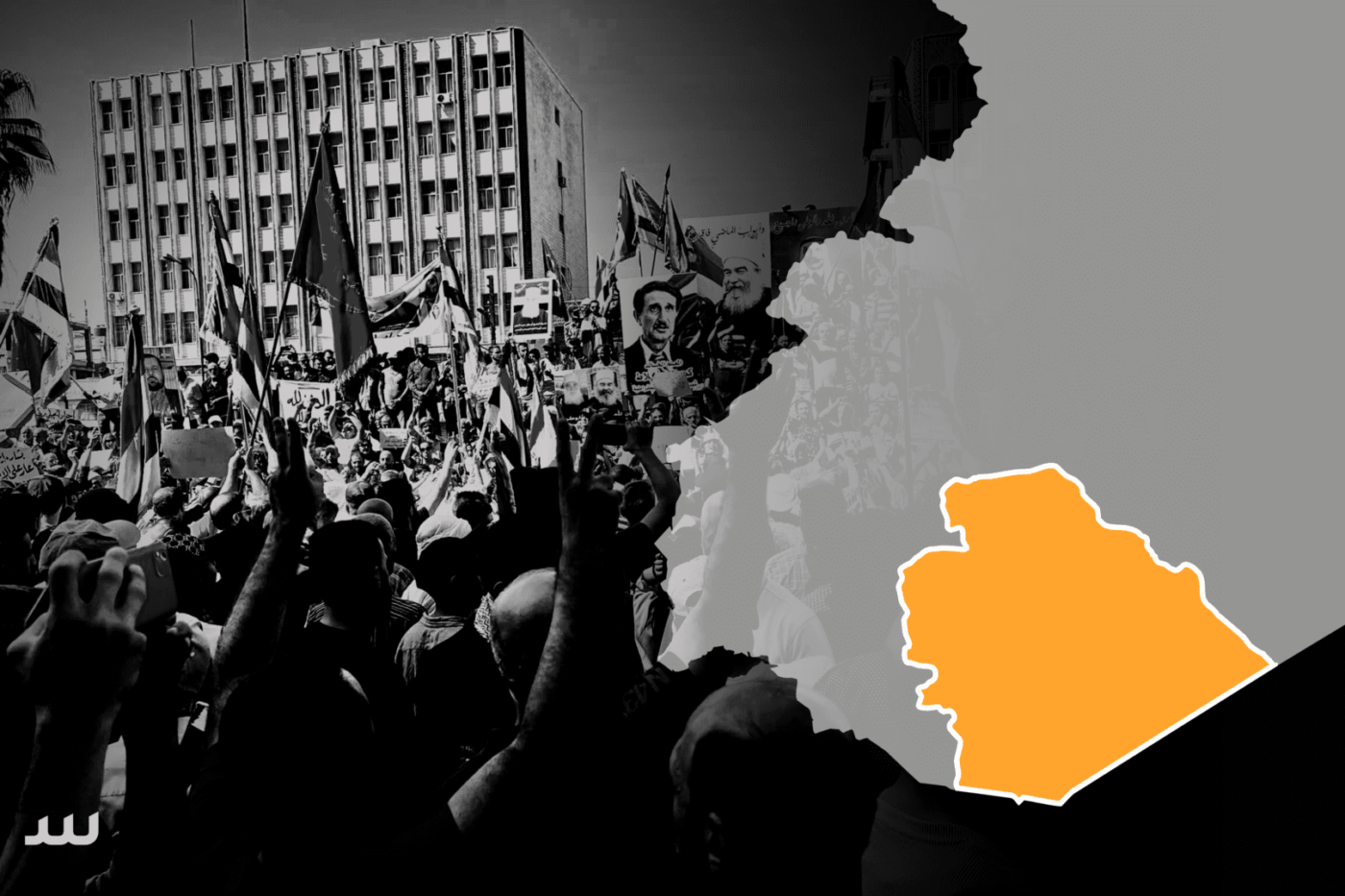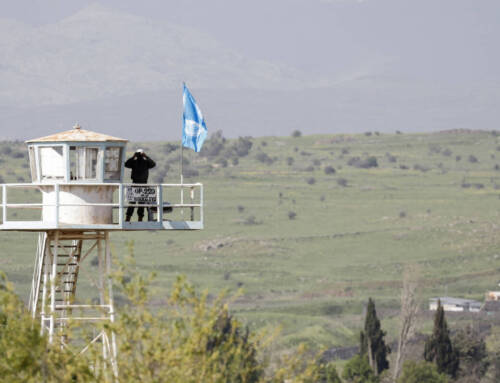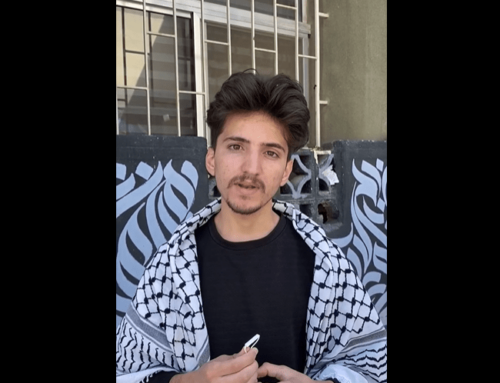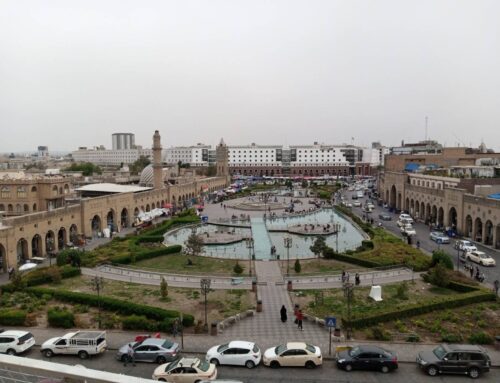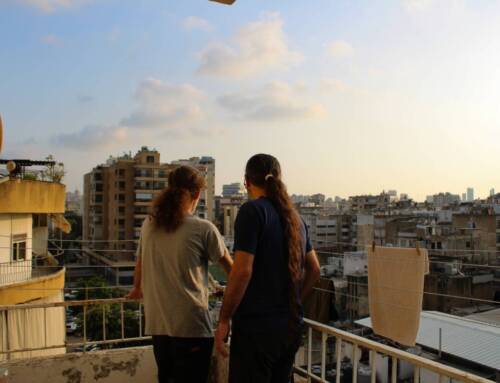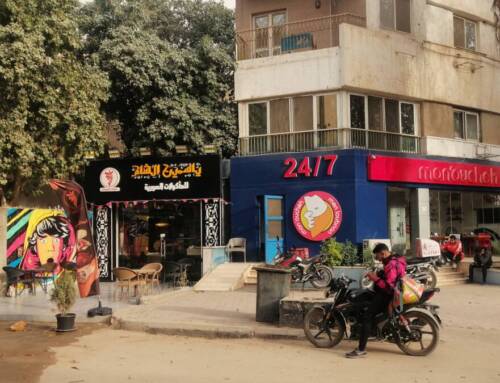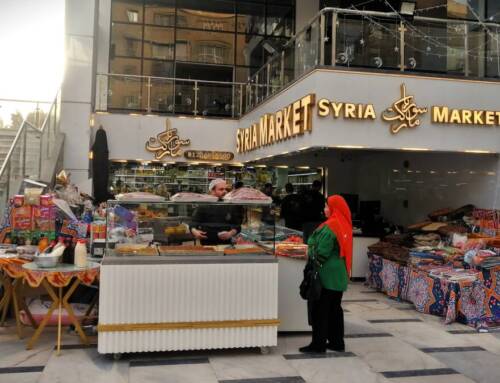As Assad ‘ignores’ Suwayda’s uprising, what is the movement’s future?
Damascus continues to outwardly ignore Suwayda’s uprising—the longest, most organized and widespread protests in the southern province’s recent history—while demonstrators believe their movement can hold strong.
6 October 2023
Demonstrators raise Druze flags and signs calling for freedom and political change in Suwayda city’s downtown al-Karama (Dignity) Square, 6/10/2023 (Uprising Media Center)(Photo edit by Syria Direct)
PARIS — Suwayda’s movement persists, with the southern province’s longest, most organized and widespread protests in recent history continuing since mid-August. Demonstrators’ demands have risen to calls for the regime to fall, its leaders to depart and for a political solution to be found in accordance with Security Council Resolution 2254.
In response, the Syrian regime—contrary to the repression of its opponents after the Syrian revolution broke out in spring 2011—has dealt with Druze-majority Suwayda by seemingly ignoring what is happening there. It continues to do so, despite the international community’s interaction with the movement, and communications between Western officials and Sheikh Hikmat al-Hijri, the highest religious authority for Syria’s Druze.
Being ignored “is what we want,” Hassan Abu Asaly, who is taking part in Suwayda’s protests, told Syria Direct. “We are continuing our movement, which is being reported by various media. Let it continue to ignore, and we will continue to demonstrate.”
“The regime is betting on time, and we are betting on our ability to withstand,” Abu Asaly added. “Turning back is suicide.”
But as time goes by and Damascus continues—outwardly—to disregard what is happening in Suwayda, this approach raises questions not only about the future of the province’s movement, but about how long the regime can continue to ignore it.
Betting on time
Damascus has made indirect attempts to silence Suwayda’s demonstrations. “Through social and security figures from the province, it is working to convince the street to stop demonstrating,” Rayan Maarouf, editor-in-chief of the local media network Suwayda 24, told Syria Direct.
“The regime has not completely ignored the movement, but is not dealing with it the way it dealt with other Syrian provinces because of the sensitivity of Suwayda,” he added.
At the same time, Damascus has sought to “create a counter-street in the province, that is, to mobilize a loyalist march through figures loyal to it, as well as members of the Baath Party, to counter the Suwayda demonstrations,” Maarouf said. “It failed.”
For sources Syria Direct spoke to, the regime’s approach to Suwayda’s movement makes it clear that it is betting on time, betting that people give up, while trying not to use excessive force in dealing with the demonstrations.
Domestic conditions within Syria play a role in limiting Damascus’ ability to confront what is happening in Suwayda, journalist and researcher Mazen Ezzi said. The regime’s current policy is “the result of its inability to provide any solution to the people due to its economic weakness—the treasury is empty, and its options are weak,” Ezzi, who is from Suwayda, told Syria Direct from his current residence in Paris. “State institutions are in a tough position, even in terms of ordinary living requirements and demands.”
Unable to act, “the regime chooses to ignore. This is not a stupid choice, but a rational one,” Ezzi said. “It cannot be said to be a policy of complete disregard, as the regime conducts intensive surveillance in the province through a wide network of security services and local networks. The regime is monitoring and compiling data on everybody.”
The ‘last fig leaf’
Maarouf, of Suwayda 24, expected that demonstrations would continue “so long as the regime continues its current policy.” But their momentum, or the number of people participating, could decrease due to the “approach of winter, the economic burdens as demonstrators interrupt their business interests and jobs, as well as the transportation costs of getting from the Suwayda countryside to al-Karama Square” in the provincial capital,” he said.
He estimated that a round-trip journey from the Suwayda countryside to al-Karama Square costs around SYP 50,000 ($3.70 according to the current parallel market exchange rate of SYP 13,425 to the dollar). As time goes by, “some might decide to participate once a week, not on a daily basis,” he said.
But “people are concerned with more than the costs of transportation,” Abu Asaly said. “For us, this cause has become the cause of a nation.” Getting to the demonstrations has become more challenging, however, as “some public transportation drivers stopped taking people to demonstration sites because they were threatened with being prevented from accessing fuel,” he said.
“People help each other with the costs of getting to the demonstrations,” he added. “Those who don’t have a daily job participate every day,” while Friday, during the weekend, is inclusive “because most people participate in the demonstration.”
The same economic crisis that could limit Suwayda residents’ participation in the movement is what drives Damascus to “maintain a policy of not entering into a confrontation with the province for as long as possible,” Maarouf said. “The cost of any move is great, from an economic perspective.”
If Suwayda’s demonstrations persist, Ezzi considered one possible scenario to be regime authorities trying to “spread chaos, turn people against each other and create division in the street.” Still, he and other sources considered the direct use of force unlikely.
“Current regional and international conditions limit the regime’s ability to confront Suwayda’s movement,” a source from one of the southern province’s local armed factions said, requesting anonymity because he is not authorized to speak with the media. The demonstrations come at a particularly sensitive moment, as Damascus is “in a stage of Arab rehabilitation,” he told Syria Direct, in reference to regional normalization efforts.
Maarouf agreed. On top of general regional and international conditions, “Suwayda is sensitive because of the presence of the Druze minority, which extends into three countries: Lebanon, Palestine and Jordan. The regime will have a problem if it fabricates any clash or uses violence,” he said.
Jordan’s King Abdullah II remarked on the protests in southern Syria on September 20, saying: “We’re back to the beginning of the Arab Spring where people are demonstrating because they are suffering.” He warned of “another wave of refugees” that Jordan and Lebanon could face as a result.
For decades, Damascus has claimed to be “the protector of minorities, which means that the last fig leaf will fall if it uses military force against Suwayda,” the military source said. “The regime could resort to indirect violence, as a last resort, such as assassinating active figures in the movement. There could be bombings or a repeat of the [Islamic State] IS attack,” he said, referring to accusations that Damascus allowed the group to launch an assault on Suwayda that killed 220 people in mid-2018.
“All that would lead to more anger and vengeance against the regime, and could push the province to options like completely putting an end to the regime’s security and military presence,” he added.
“We and the street are aware of these regime attempts, and take them seriously and consciously,” he concluded, stressing “we will not allow it to achieve its ends by fabricating any security problem, even indirectly.”
Suwayda’s future
Since Suwayda’s protests broke out in mid-August, Hikmat al-Hijri has received many phone calls from Western figures and officials as one of Suwayda’s most important leaders. Among the three Sheikhs of Reason who make up the religious leadership of Syria’s Druze, al-Hijri is most closely aligned with the demonstrators in the streets, compared to Sheikh Hamoud al-Hanawi and Sheikh Yousef Jerboa.
On October 5, French Special Envoy for Syria Brigitte Curmi held a call with al-Hijri, in which she discussed “the ongoing demonstrations in Suwayda, the importance of the peaceful movement and the active participation of women, and the need to implement UN Resolution 2254,” as she posted on X (formerly Twitter).
The week before, United States Deputy Assistant Secretary of State for Near Eastern Affairs Ethan Goldrich called al-Hijri to express his country’s support for the peaceful protests in Suwayda, as the US Embassy in Syria posted on X.
Maarouf characterized these contacts as “just general conversations between officials and Sheikh al-Hijri, in the context of supporting the peaceful movement and the demands of the street.” Ezzi described them as “normal and natural.”
Still, the calls worry some of those demonstrating, who fear the regime could exploit their existence or that they could lead to unsatisfactory results in the province, Samer Salloum, an activist participating in the movement, told Syria Direct. “The calls, especially the American ones, are frightening,” he said. “We as revolutionaries worry that these contacts will lead to something akin to an autonomous administration or southern canton.”
The military source agreed, calling Western contacts “somewhat worrying,” and emphasizing that “the street does not want secession” from Damascus, or “self-rule, for national and economic reasons.” Accordingly, “some fear that Sheikh Hikmat al-Hijri will be persuaded of such a project by the Americans,” he said, not to mention that “it will be an excuse for the regime to describe what is happening as an American conspiracy.”
“So long as the [international] calls do not entail real change, and do not come with international moves to isolate or change the regime, or to impose a political solution consistent with Resolution 2254, they are not in our interest,” he said.
Suwayda “cannot become similar to the Kurdish Autonomous Administration, or a model of separatist governance,” Maarouf said, adding that these ideas were not accepted by the public. “Suwayda is isolated. This area does not have the ingredients—like oil—to build this separate region. The local community cannot be self-sufficient.”
Looking to the future, the most likely option, in Maarouf’s opinion, is “a new model that could somewhat resemble the other southern regions—Daraa and Quneitra—because the situation is quite similar. [There,] security authority is absent, its presence a formality. People demonstrate, and the local community plays a bigger role in governance.” In Suwayda, “it would be a model developed from a copy of the central committees in Daraa, which played an active role in society and managing its affairs.”
Daraa’s central committees are civil committees made up of military leaders from local opposition factions that completed settlements with the regime, civilian figures and local community leaders. They were formed after the summer 2018 settlement agreement that saw Damascus regain control over the province. In the years since, they have worked to complete negotiation processes with the regime and administer the areas it controls. However, the role of the committees declined—and ended—in some areas over the past two years, as Damascus dismantled them through a series of assassinations.
Read more: Daraa negotiating committees gutted by assassinations, departures
Al-Hijri’s guesthouse, known as Dar al-Qanawat for its location in the northeastern Suwayda village of al-Qanawat, has become a political destination in recent weeks due to its religious and social symbolism. “The guesthouse receives local delegations of residents and opposition politicians from the province, to discuss the popular movement’s developments, political issues and the province’s future,” Maarouf said.
Those who flock to the guesthouse “discuss the future of the province, the idea of the central committees and models developed from them, and the idea of establishing local councils,” he added. There are also conversations between residents and religious authorities and “Syrian activists from Daraa and other provinces, to discuss options for Suwayda’s future,” he said.
While the shape of things to come is mulled over in al-Qanawat, demonstrations that “began with 100 people in Suwayda’s downtown al-Karama Square on the first day have become thousands of people today, and they are still going,” activist Salloum said. “The street has had its say: We won’t tire, we won’t back down until he leaves.”
**
This report was originally published in Arabic and translated into English by Mateo Nelson.

